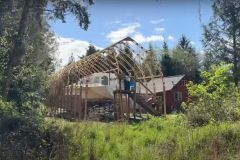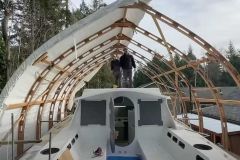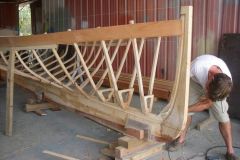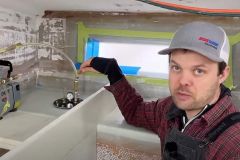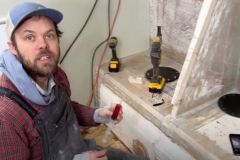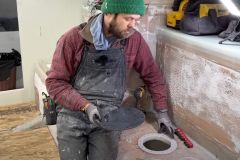Back to the mainsail traveller bulkhead
As a preamble to today's video, Matt explains that he has encountered difficulties with the manufacture of the carbon chainplates for the shrouds, which he has done in previous episodes. He therefore takes a break from this work, so that he can present the appropriate solutions.
In the meantime, he's back to laminating the aft bulkhead of the roof, which supports the mainsail traveller. To do this, it has to be extremely solid, and therefore requires numerous layers of glass fabric. After a few unidirectional reinforcements, 20 layers of biaxial were used. But Matt has to do this in several stages, not least because of the spring heat, which causes the epoxy to harden rapidly outdoors. To make sure he doesn't overshoot the setting time before vacuuming the bag, Matt keeps an eye on the time, but also uses a control sample of resin, which he monitors in a beaker.
In 2 days and 3 passes, he managed to finish the job.
Preparing the bow
During the hot afternoons, Matt prepares the repair yard for the bow. Duracell had collided with a merchant ship, dismasting it. In the process, the bowsprit broke and the bow suffered. Matt and his mother dismantled the chainplates on the forward stays, as well as the metal plate and monolithic glass plate used to secure the bowsprit. The foam in the crash box has suffered over time, and Matt plans to partially rebuild the bow.
When weighed, the chainplates add up to 50 kilos. Added to the chainplates on the side shrouds, the mast was held together by 150 kilos of stainless steel, which Matt will replace with around 50 kilos of carbon.




